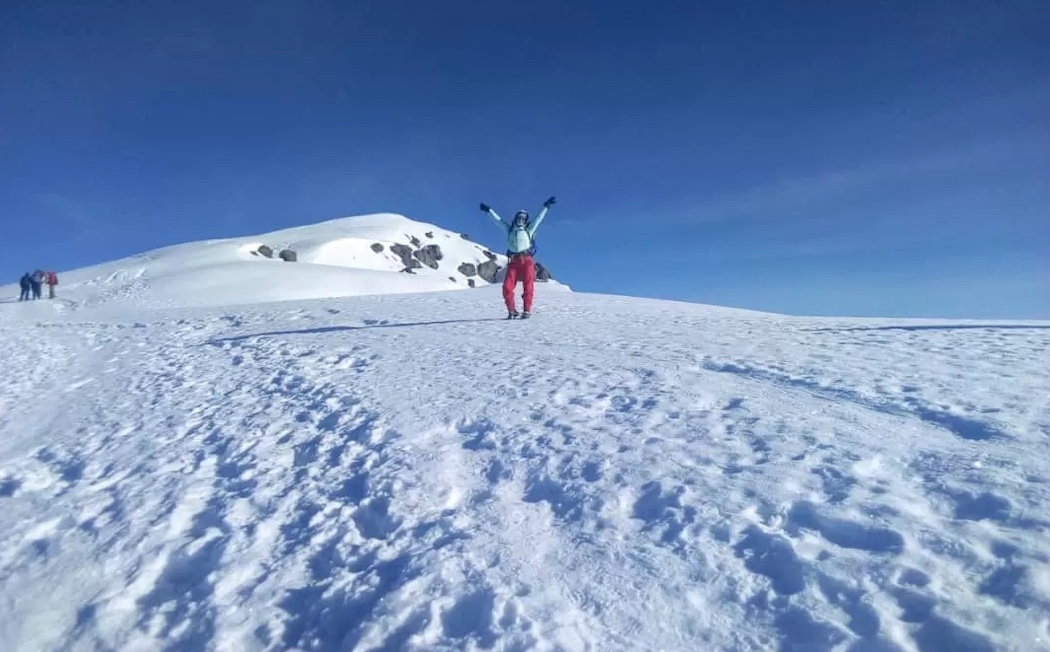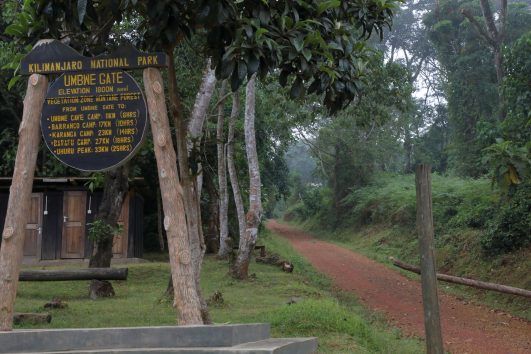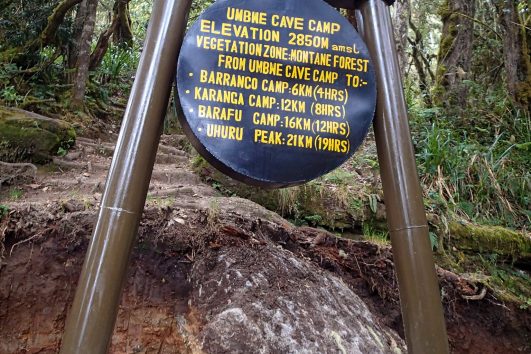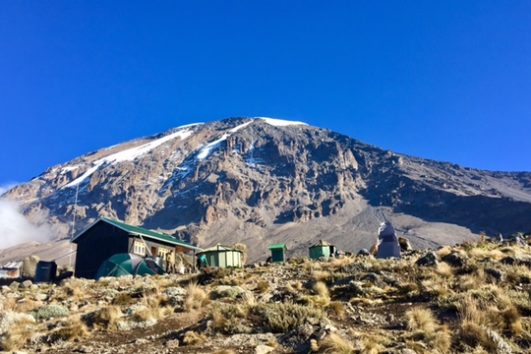The Arrow Glacier, Mount Kilimanjaro: A Landmark on the Western Breach Route
Elevation: 4,800 meters (15,748 feet)
Mount Kilimanjaro is renowned for its stunning landscapes, dramatic summit, and unique ice fields, many of which are rapidly retreating due to climate change. Among these is the Arrow Glacier, a key feature on Kilimanjaro’s western slopes. Though smaller than other glaciers on the mountain, Arrow Glacier holds a special place in the hearts of climbers, particularly those taking on the challenging Western Breach Route.
In this article, we’ll take a closer look at Arrow Glacier—its history, significance, and what climbers can expect when encountering this icy relic during their Kilimanjaro ascent.
Arrow Glacier at a glance
The Arrow Glacier is situated on the western side of Mount Kilimanjaro at an elevation of approximately 4,800 meters (15,748 feet). It was once part of a much larger ice field that dominated this side of the mountain. Today, Arrow Glacier is significantly smaller due to the rapid melting that has occurred over the past century. Despite its shrinking size, the glacier remains an important landmark for climbers attempting the more difficult and adventurous Western Breach Route.
Arrow Glacier serves as both a visual and physical marker for trekkers, signaling that they’re nearing the steep, rocky ascent of the Western Breach—a route known for its challenging terrain and breathtaking views.
The Role of Arrow Glacier in Kilimanjaro Climbing
The Western Breach Route is not for the faint of heart. It’s a steep, technical climb that attracts adventurers seeking a more daring way to summit Kilimanjaro. Along this route, the Arrow Glacier Camp serves as a crucial resting point before climbers tackle the final push toward the summit. The camp is located just below the glacier and offers stunning views of the ice formations above.
Historically, this area was covered in a much larger ice field, but today, Arrow Glacier has retreated significantly. Despite this, the glacier and its surroundings remain one of the most beautiful and serene parts of the mountain, providing a stark contrast between Kilimanjaro’s volcanic rock and the remnants of its icy past.
For many, standing at the base of Arrow Glacier is a powerful experience. It offers climbers the chance to reflect on the natural beauty of Kilimanjaro, as well as the environmental challenges it faces. As one of the last remaining glaciers on the mountain, Arrow Glacier is a reminder of the fragile balance between nature and climate change.
How Arrow Glacier Compares to Other Glaciers on Mount Kilimanjaro
While Arrow Glacier may not be as large or well-known as the Northern Ice Field or the Furtwängler Glacier, it holds its own significance for climbers. The glacier is much smaller, but its location on the Western Breach route makes it a key feature for those ascending this side of the mountain.
In comparison, Drygalski Glacier, located on the southern slopes, sits at a higher elevation (around 5,000 meters) and is visible to those on routes like Machame and Umbwe. Both glaciers have shrunk significantly, but Arrow Glacier is unique due to its positioning as part of one of Kilimanjaro’s most difficult ascent routes.
Like the rest of Kilimanjaro’s glaciers, Arrow Glacier is rapidly disappearing. Its current state, while beautiful, serves as a symbol of the mountain’s ongoing transformation.
Climate Change and the Disappearance of Arrow Glacier
The glaciers of Kilimanjaro, including Arrow Glacier, have been melting at an alarming rate over the last century. Since 1912, more than 85% of the ice cover on Kilimanjaro has disappeared. Arrow Glacier is no exception to this trend. Scientists believe that the glaciers on Kilimanjaro could completely vanish by 2050, a stark reminder of the impact of global warming.
The retreat of the glaciers is not only a loss for the mountain’s natural beauty but also for local ecosystems that rely on the seasonal meltwater from these ice fields. While the glaciers themselves do not contribute heavily to Kilimanjaro’s water sources, they are iconic features that have drawn trekkers and scientists alike for decades.
For climbers, visiting the Arrow Glacier is an opportunity to witness one of Kilimanjaro’s last remaining glaciers before it disappears entirely.
Quick Facts About Arrow Glacier
Location: Western slopes of Mount Kilimanjaro
Elevation: Approximately 4,800 meters (15,748 feet)
Route: Visible from the Western Breach Route
Size: Significantly smaller today due to glacier retreat
Camp: The Arrow Glacier Camp is located below the glacier, serving as a key stop for Western Breach climbers
Climbers: Popular among trekkers taking the Western Breach or Lemosho Route extensions
Historical significance: Part of a larger ice field that has been rapidly retreating over the last century
Future: Predicted to disappear completely by 2050 if current trends continue
FAQs About Arrow Glacier, Mount Kilimanjaro
Q: Where is Arrow Glacier located?
A: Arrow Glacier is located on the western slopes of Mount Kilimanjaro, at an elevation of around 4,800 meters. It is primarily accessed by climbers taking the Western Breach Route.
Q: Can climbers still see Arrow Glacier?
A: Yes, while Arrow Glacier has shrunk significantly over the years, climbers on the Western Breach Route can still see the glacier, especially at the Arrow Glacier Camp.
Q: Why is Arrow Glacier important for climbers?
A: Arrow Glacier serves as a key landmark for climbers taking the more technical Western Breach Route. The Arrow Glacier Camp is a crucial stop before tackling the steep climb toward the summit.
Q: Is Arrow Glacier disappearing?
A: Yes, like all of Kilimanjaro’s glaciers, Arrow Glacier is rapidly retreating due to the effects of climate change. Scientists estimate that it could disappear completely by 2050.
Q: How does Arrow Glacier compare to other glaciers on Kilimanjaro?
A: Arrow Glacier is smaller than some of Kilimanjaro’s more well-known glaciers, such as the Northern Ice Field or the Furtwängler Glacier. However, its location on the Western Breach makes it a significant feature for those taking this route.
Arrow Glacier, a Symbol of Kilimanjaro’s Changing Landscape
Though Arrow Glacier is not the largest glacier on Kilimanjaro, it is an important feature for climbers who take the more adventurous Western Breach Route. As Kilimanjaro’s glaciers continue to retreat, witnessing Arrow Glacier is a reminder of both the mountain’s stunning beauty and the urgent need to address climate change.
For those climbing Kilimanjaro, a visit to Arrow Glacier offers a glimpse into the mountain’s icy past and the challenges it faces in the future.





Tour Reviews
There are no reviews yet.
Leave a Review